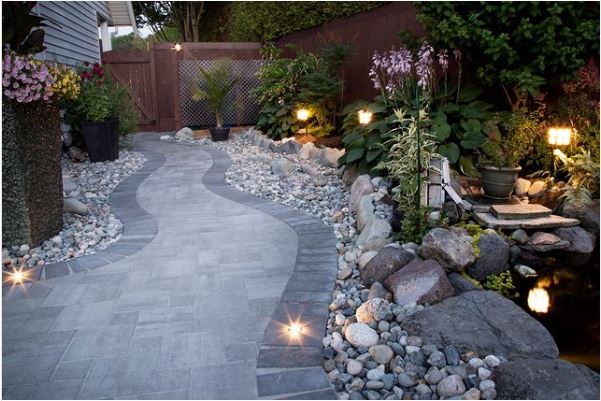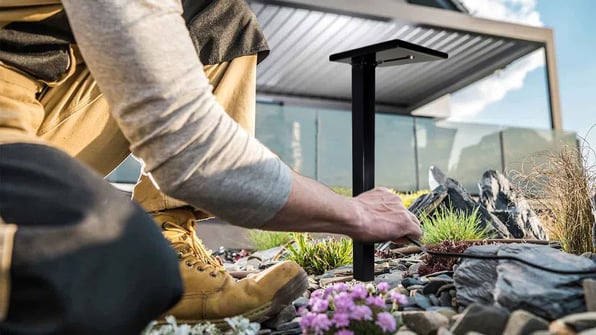
6 min read
How to Use Outdoor Lighting to Enhance Your Landscape
Posted by The Illuminator
From creating lush curb appeal to designing a tropical backyard oasis, homeowners put a lot of sweat equity and financial resources into their landscaping.
“Whether it's planting flower beds, installing hardscaping, or getting a handle on the weeds in the garden, it seems we all want to make the most of our backyard landscaping ideas,“ said Homes & Gardens Country.
These landscaping projects can range from $2,500 to $15,000, and beyond depending on the size of the project.
“'Landscaping costs vary significantly,' Jeremy Yamaguchi, CEO of Lawn Love told Homes & Gardens. 'The main factors that will impact the overall cost include the size of your yard, the features you choose to have installed, the company you hire (and how many workers the job requires), the level of service you want (basic, intermediate, advanced landscaping, etc.), and how long it takes to complete.”
It is important to remember that your landscaping is not complete without the addition of outdoor lighting.
“To create the perfect ambiance for your backyard, patio, or garden, mix up your outdoor lighting types and brightness levels. Accent lighting like lanterns, candles, and fire fixtures add warmth, while wall lights, landscape, and path lights are more functional; they illuminate walking paths and doorways for safety reasons. You need both!” suggests the folks at Neighbor, who make outdoor furniture and goods.
5 Advantages of Lighting Up Your Landscaping
Landscape lighting is just one type of outdoor lighting that enhances and completes your home.
“Brighten your home, garden, and landscaping and make walkable pathways with landscape lighting. Landscape lights are versatile and low-maintenance and can be hidden from view with plants,” says Neighbor.
For sure, patio lights, pool lights, porch lights, and other types of outdoor lighting have important roles but make sure to leave room for landscape lighting in your budget as there are five main advantages of adding it:
- Flexibility for the Future: Landscape light is very flexible as you can choose to light a single tree, particular shrubs and bushes, and entire footpaths. You can easily add, update, change, and enhance your landscape lighting as the mood, and budget strikes you. Landscaping changes over time as your greenery grows, and you can change your landscape lighting as needed from season to season.
- Go Green with Your Greenery: More and more homeowners care about sustainability and the footprint they are leaving on the environment. Upgrading to, or adding, LED lighting is an eco-efficient move. LED lights used 80 percent less energy than traditional lighting making them sustainable. They are long-lasting which makes them long-term cost savings and require very little maintenance. A far cry from their inception, the LED lights of today offer all the options of traditional lighting and even now have more size variability, color rendering and better focus.
- Stay Safe and Secure: When you light up your landscaping areas, especially along perimeters, you are taking potential entry points to your property out of the shadows. The more lighting you add outdoors the less potential for vandalism, burglaries, and other crimes. Most criminals take the path of least resistance and that means targeting easy-access homes with very little to no lighting. Landscape lighting will help keep your property and family safe and secure.
- Light Up Your Life: You spent a lot of hard work and funds on your landscaping so why only enjoy it and show it off during the daytime? Landscape lighting means that you can enjoy your landscaping long after sundown, providing you, your family, neighbors and friends with aesthetically pleasing views.
- Improve Your Home Value: Let’s face it, you are adding landscape lights for your own personal enjoyment and for all the reasons we just mentioned: flexibility, sustainability, after-hours viewing, and safety and security, but you will also get the added value of increased home value. The curb appeal and the way your landscape lights show off your property at all hours will be attractive to potential homebuyers when the time comes for you to move on to a new adventure.
Pro Tips for Adding Outdoor Lights to Your Landscaping
The flexibility that comes with adding outdoor lights to your landscaping means that you have plenty of options to choose from.
“You can use landscape lights to highlight certain features of your home or garden. Floodlights, up lighting, and path lights are the most popular landscape lighting options,” says Neighbor.
Here are some pro tips when it comes to adding outdoor lighting to your landscape:
- Path lights are essential as they make it easier for your guests to find their way around.
- Set your landscape lights with a timer to come every day at dusk and go off at a time after everyone in your household has turned in for the night.
- Resist the temptation to place too many fixtures in one space or zone.
- Avoid the “runway effect” by not placing too many pathway lights in a straight line.
- Consider adding dimmers to your landscape lighting as there may be times when you want more, or less, illumination in areas.
Want to know where to start? Try these simple steps:
- To develop an outdoor landscape lighting plan, first determine how many zones around your property you will be lighting (include front yard, backyard, and side yards).
- Prioritize the landscape features you want to illuminate, which can include:
- Trees
- Shrubs
- Plants
- Pathways
- Benches
- Accent walls
- Decide why categories of landscape lighting you want to add, which can include:
- Directional lighting: Can be a narrow or wide beam added to a specific item or feature.
- Area lighting: 360 degrees of illumination.
- Pathway and step lighting: Fixtures designed to illuminate walkways and paths.
- Wall Wash (creates a soothing and even glow) and other specialty lighting: From pendants to string lights to underway lights in a garden pond, there are many varieties of lighting you can add.
- Consider different outdoor landscape lighting techniques other than wall washing and path lighting, such as:
- Highlighting: Very traditional way of using directional lighting to highlight a tree or other landscape feature.
- Silhouetting: Placing lighting behind a feature can create a crowd-pleasing silhouette.
- Shadowing: Placing outdoor lighting in the right place can create resulting shadow effects on your home’s façade.
- Up Lighting: Can create a bold effect with lights placed at the base of an item and put upwards.
- Down Lighting: Those in dark skies communities will want to make use of down lighting as they may have restrictions on up lighting and other types of outdoor lights.
- Moonlighting: Create a moonlight effect by placing a large fixture with a full glare guard high up on a tree and angled downwards.
The best advice is to make an outdoor lighting plan, find a trusted source to supply and install your new lights, and then sit back and enjoy them for years to come.


.jpg?width=596&name=ezgif.com-webp-to-jpg%20(2).jpg)
